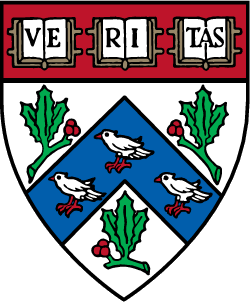
Dialogue
Constitutionally Sound, Educationally Innovative
Illustration by Andrew Zbihlyj
By Diane L. Moore
Ms. Q is teaching an eighth-grade world history course that covers the fall of Rome to the beginnings of the European Renaissance. As part of their study of the “Golden Age” she has [the class] act as explorers of the diverse cultures that came under the rule of expanding Islamic empires. After reading excerpts from the logs of medieval Muslim travelers such as Ibn Jubayr, Ibn Batuta, and Naser-e Kosraw, . . . students watch clips from the documentary “Islam: Empire of Faith” and conduct outside research on medieval cities from Central Asia, North and West Africa, the Iberian Peninsula, and Arabia that includes an investigation into mosques that were built in these locations during this time period. Students conclude by creating their own “Explorer’s Journals” in which they describe, through writing and illustration, the similarities and differences they saw between expressions of Islamic life and practice as Muslims moved into these culturally diverse regions. . . .
Mr. J always starts his tenth-grade English class with a unit on biblical stories in order to prepare his students for the Western classics they will read that year. First, he gives his students a selection of biblical-themed cartoons from The New Yorker and asks them to identify in writing as many of the characters and stories as they can in five minutes. As most students discover they know only a few of the “big ones” (Adam and Eve, Noah, Moses), Mr. J shows them “He forgot—and I—remembered” by Emily Dickinson and points out the various biblical allusions that they would need for an in-depth exploration of the poem. He then hands out a list of several popular biblical allusions . . . and students choose which story they will research and present. As part of a five-minute Powerpoint presentation, students must provide . . . a short synopsis of the story as it appears in the King James Bible (Mr. J chooses this translation since it is the one the majority of English authors they are studying would have known and used) and a representation of this story in an art form other than literature.1
How many of us have actually had classes in elementary, middle, or secondary school like the ones described here? It is probably safe to guess that all too few of us have. Contrary to the popular belief that the “separation of church and state” bans teaching about religion in public schools, religion is actually deeply embedded in state curricular standards across the disciplines and is especially prominent in the areas of history, social studies, and English. In spite of this fact, few teachers have had the opportunity to learn about religion from the religious studies lens appropriate for public schools. Furthermore (unlike other disciplines), until now there were no content and skill guidelines for educators about religion itself that were constructed by religious studies scholars. To address this gap, the American Academy of Religion (AAR) recently published the American Academy of Religion Guidelines for Teaching About Religion in K–12 Public Schools in the United States2 as a resource for teachers and citizens.
The Guidelines took three years to draft and were constructed by a six-member task force in cooperation with public school educators, teacher educators, and the broad membership of the AAR. They are based on three assumptions: First, there is a widespread illiteracy about religion in the United States. Second, religious illiteracy has many consequences, but an especially troubling one is that it can fuel prejudice and antagonism between and among religious groups and between those who profess religious belief and those who do not. Third, it is possible to diminish illiteracy about religion by teaching about religion in public schools from a non-devotional perspective called religious studies. There are important differences between this approach and a faith-based approach to learning about religion. A helpful thumbnail sketch for distinguishing between them was first articulated by religious studies scholar James V. Panoch in 1974,3 and a revised version is included in the AAR Guidelines: A religious studies approach encourages student awareness of religions, but not acceptance of a particular religion; studying about religion, but not practicing religion; exposing students to a diversity of religious views, but not imposing any particular view; and educating students about all religions, but not promoting or denigrating religion itself.4 Establishing the difference between the devotional expression of religion and the study of religion through a religious studies lens provides a point of departure in the Guidelines for how educators can incorporate the study of religion into curricula in constitutionally sound, intellectually responsible, and educationally innovative ways.
The 50-page document is organized into four sections that move from rationale to practice. Part One attempts to answer the question “Why Teach About Religion?” by pointing to the unfortunate consequences of religious illiteracy and the importance of teaching about religion from a religious studies perspective in K–12 public schools. Part Two discusses “Religion, Education and the Constitution” and clarifies the distinction outlined above between a devotional approach to religion and a religious studies approach appropriate for public schools.
Part Three, the heart of the document, provides several practical tools and tips for educators. It begins by identifying the common approaches to teaching about religion (historical, literary, traditions-based, and cultural studies) that are already employed by educators and offering an analysis of the strengths and weaknesses of each. Following this overview is a focus on pedagogical strategies that can be used to engage students in examining their assumptions about religion, belief, or particular religious traditions at the outset of a lesson or unit where religious themes will be addressed. Educators have learned that students often harbor unexamined biases and assumptions about religion that can easily derail even the most well structured plans. Recognizing the force of these assumptions and helping students become aware of them are some of the particular challenges that come with teaching this subject.
The document then outlines and elaborates upon three fundamental premises about religion that are central to a religious studies approach: 1) religions are internally diverse; 2) religions are dynamic; and 3) religions are embedded in culture. Unfortunately, in schools and in popular culture, faith traditions are often presented as a single set of beliefs, practices, and representations that are uniform, ahistorical, and distinct from other realms of human experience. (Typical examples include learning about the Five Pillars of Islam, the Four Noble Truths of Buddhism, and the Ten Commandments of Judaism and Christianity as sufficient representations of these faiths.) The premises that religions are diverse, evolving, and embedded in culture are then illustrated in “snapshots of practice” (such as the two found at the beginning of this article) that aim to represent a more accurate and robust depiction of religion than is typically practiced in classrooms today. Part Three of the document ends with suggested answers to “frequently asked questions” by students in schools, such as “Are religion and science incompatible?” “Did the Jews kill Jesus?” and “Is Islam a violent religion?”
Part Four focuses on teacher education, providing “content competencies” necessary if educators are to teach religion in an intellectually sound and constitutionally responsible way. Not only are “pedagogical competencies” listed, but so are “appropriate attitudes/postures,” which include such advice as “Teachers should never try to coerce students to accept or reject any particular religious tradition, belief, or practice, including non-belief or atheism,” “Teachers should not discourage students’ free expression of their religious beliefs or ideas,” and “The personal religious beliefs or practices of the teacher do not qualify or disqualify the teacher from teaching about religions in his or her classroom. Rather, academic training in religion content and pedagogy are the qualification for teaching religion in the schools. . . .” Part Four ends with examples of how teachers can gain the content and skill competencies necessary for teaching about religion, including the opportunity to earn a Citation in Religious Studies and Education through an initiative jointly sponsored by Harvard Divinity School and the Harvard Extension School.5
Of course, the effectiveness of the AAR Guidelines for Teaching About Religion in K–12 Public Schools in the United States will be measured by its usefulness for teachers and the implementation of its suggestions in public schools and schools of education. Though educators were centrally involved in constructing and vetting these guidelines, the AAR is eager to share the document more broadly and to solicit feedback from teachers nationwide. Toward these goals, members of the Task Force will work with the Executive Office of the AAR to distribute and publicize the guidelines widely among educators and educational associations. As part of my own research, I am seeking K–12 teachers and teacher educators from several states to volunteer to participate in a pilot study whereby they will utilize these guidelines in their own classes and programs. Part of that study will involve seeking feedback from educators that can be used in future revisions.
Given that one of the primary purposes of mandatory schooling in the United States is to provide students with the skills necessary to function as active and informed citizens of our multicultural democracy, understanding the religious dimensions of our multiculturalism is a vital yet underdeveloped component of that important purpose. Those of us who were centrally involved in drafting and vetting these guidelines realize that their publication is only a beginning, but we hope they will provide a meaningful resource for teachers and other citizens who wish to strengthen literacy about religion in our nation.6
Notes:
- “Snapshots of Practice,” from the American Academy of Religion Guidelines for Teaching About Religion in K–12 Public Schools in the United States (American Academy of Religion, 2010).
- American Academy of Religion Guidelines for Teaching About Religion in K–12 Public Schools in the United States.
- Peter Bracher et al., PERSC Guidebook, Public Education Religion-Studies: Questions and Answers (Public Education Religion Studies Center, 1974), 2.
- This version appears in many First Amendment Center publications, including A Teacher’s Guide to Religion in the Public Schools (First Amendment Center, 1999).
- For information about the Citation in Religious Studies and Education, visit http://www.extension.harvard.edu/.
- Special thanks are due to Wendy McDowell for the original idea for this article and for her helpful suggestions.
Diane L. Moore is Professor of the Practice in Religious Studies and Education and director of the Program in Religious Studies and Education at Harvard Divinity School. She is also the chair of the American Academy of Religion Task Force on Religion in the Schools that constructed the AAR Guidelines for Teaching About Religion in K–12 Public Schools in the United States.
Please follow our Commentary Guidelines when engaging in discussion on this site.

